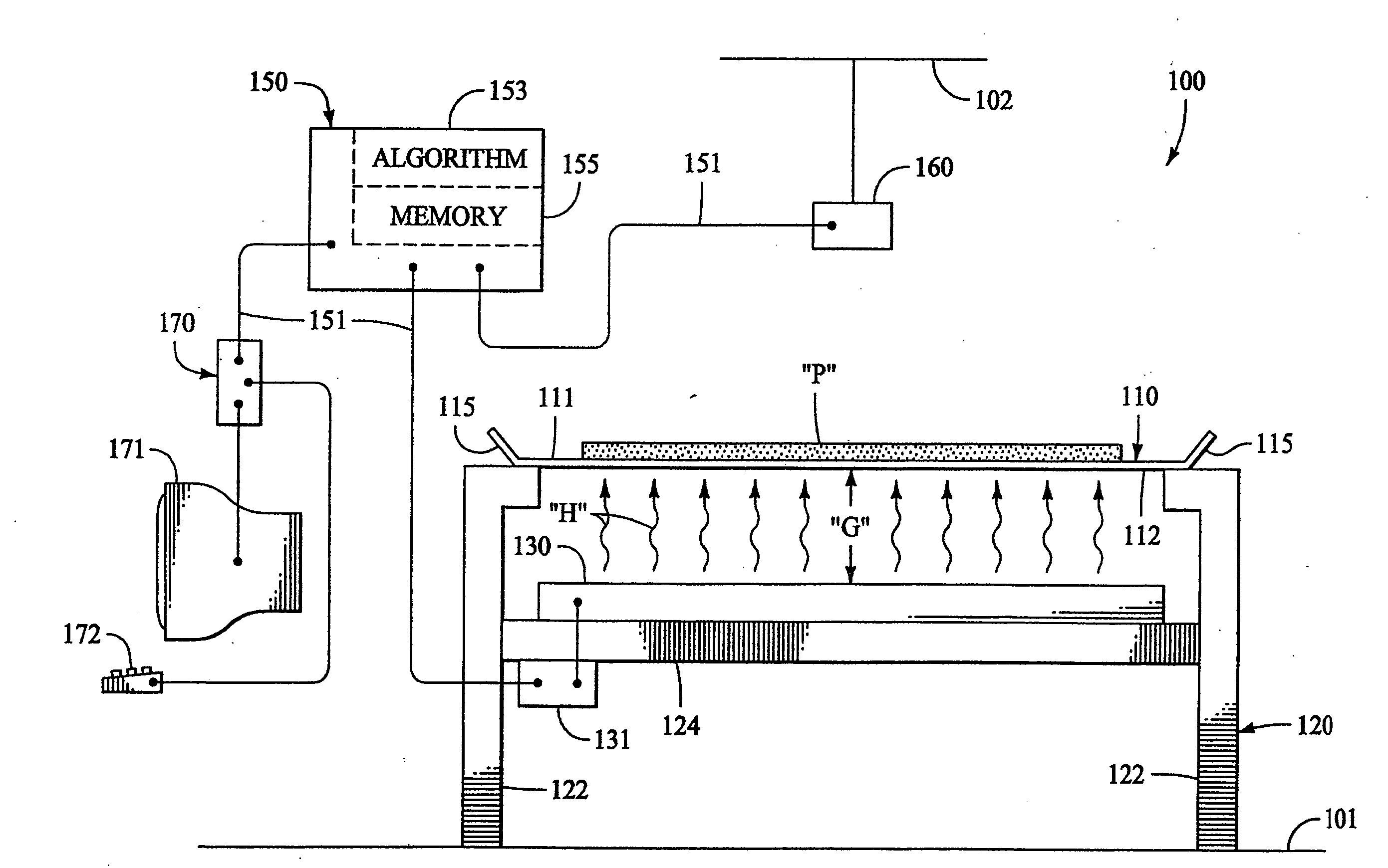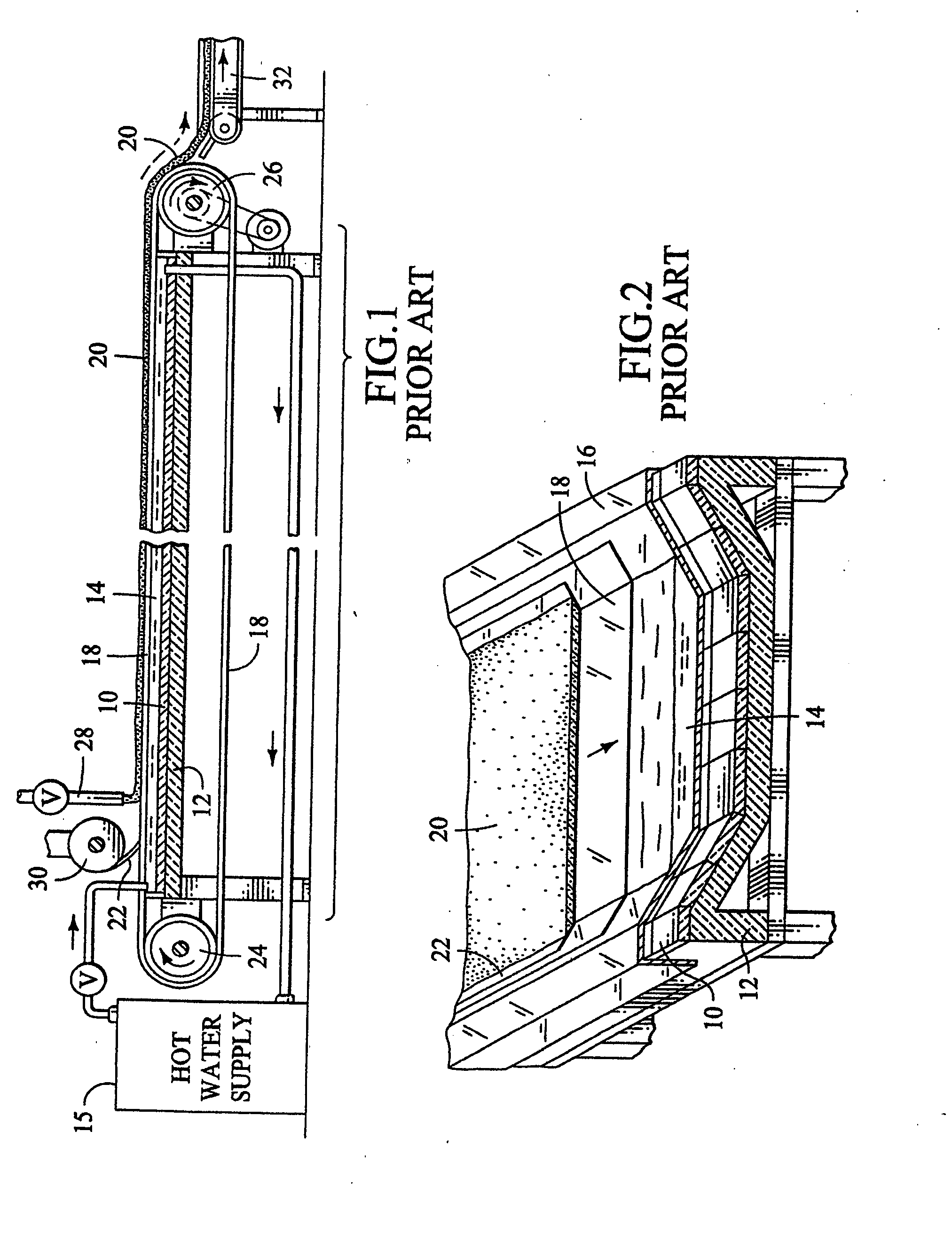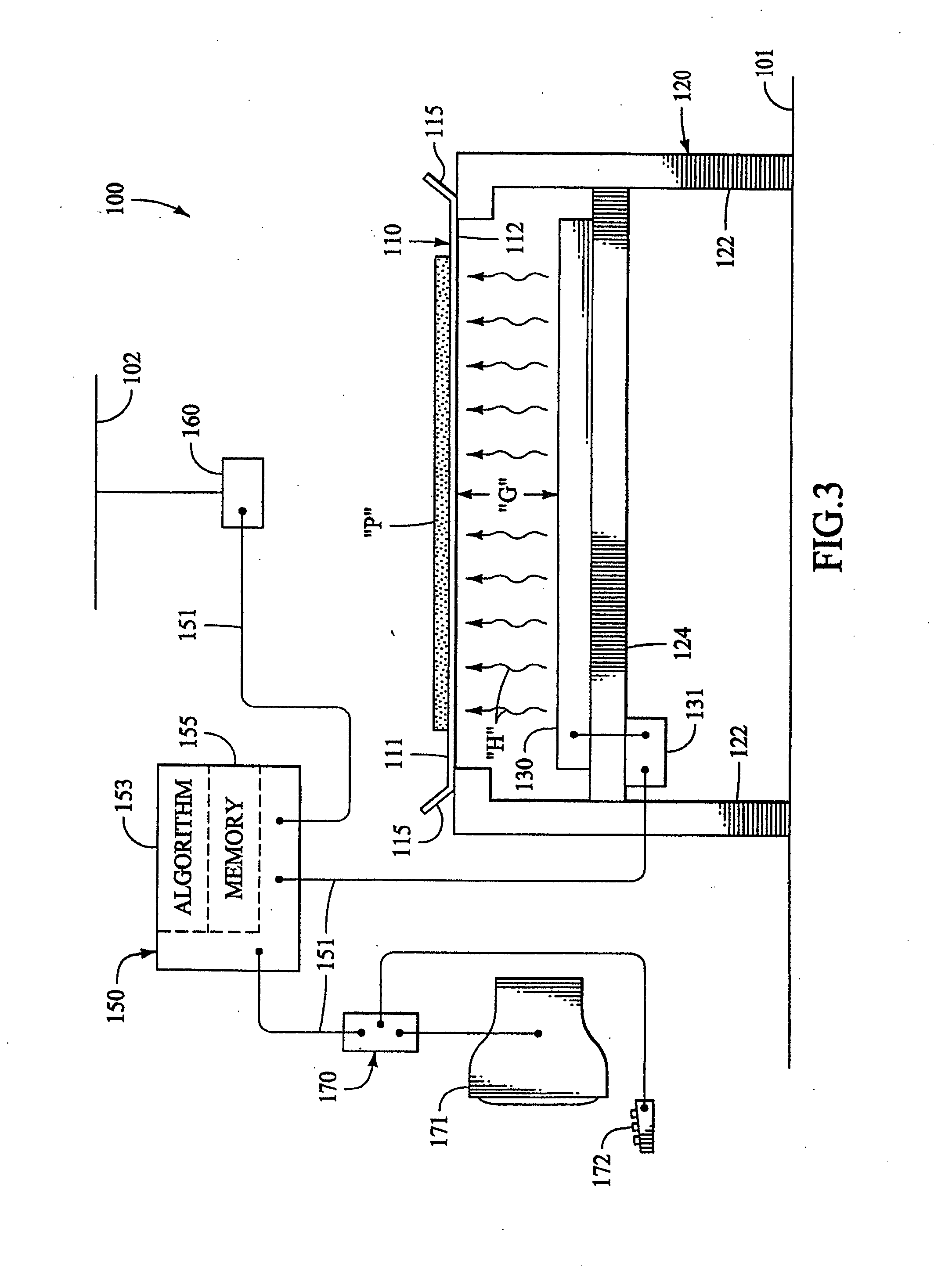Drying apparatus and methods
- Summary
- Abstract
- Description
- Claims
- Application Information
AI Technical Summary
Benefits of technology
Problems solved by technology
Method used
Image
Examples
first embodiment
[0032]Referring to FIG. 3, a side elevation view of a basic drying apparatus 100 in accordance with the present invention is depicted. The drying apparatus 100 is generally configured to remove a given amount of moisture from a product “P” to dry or concentrate the product. The product “P” can be in any of a number of types, including aqueous colloidal suspensions, or the like, which can be in the form of a liquid or paste, and from which moisture is to be removed there from by heating. The product “P” is generally spread, or otherwise placed, onto the apparatus 100 for drying. Once the product “P” has reached the desired dryness, it is then removed from the apparatus 100.
[0033]The apparatus comprises a support surface 110 onto which the product “P” is placed for drying. The support surface 110 has a first side 111 which is configured to support a layer of the product “P” thereon as shown. The support surface also has second side 112 which is opposite the first side 111. Preferably,...
second embodiment
[0051]For example, referring to FIG. 3A, a side elevation diagram is shown of an apparatus 100A in accordance with the present invention. As is evident, the support surface 110A of the apparatus 100A is configured as an endless belt comprising a flexible sheet supported by rollers 123. The support surface 110A can be configured to move, or circulate, in the direction “D.”
[0052]The rollers 123 are, in turn, supported by the chassis 120A which also supports at least one heat source 130. The heat source 130 is configured to direct radiant heat “H” toward the second side 112 of the support surface 110A. Opposite the second side 112, is the first side 111 of the support surface 110A which is configured to movably support the product “P” thereon. As is seen, the configuration of the apparatus 100A can provide for continuous processing of the product “P.”
third embodiment
[0053]Turning now to FIG. 3B, a side elevation diagram is shown which depicts an apparatus 100B in accordance with the present invention which is similar to the apparatus 100A discussed above for FIG. 3A. However, the support surface 110B of the apparatus 100B is not only configured as an endless belt, but also comprises a plurality of rigid links 113 which are pivotally connected to one another in a chain-like manner.
[0054]As shown, the apparatus 100B comprises a chassis 120 which rotatably supports rollers 123 thereon. The rollers 123 in turn movably support the support surface 110B thereon, which can be configured to move, or circulate, in the direction “D.” The chassis 120 also supports a heat source 130 thereon which is configured to direct radiant heat “H” toward the second side 112 of the support surface 110B. The support surface 110B is configured to support the product “P” on the first side 111 which is opposite the second side 112.
PUM
 Login to view more
Login to view more Abstract
Description
Claims
Application Information
 Login to view more
Login to view more - R&D Engineer
- R&D Manager
- IP Professional
- Industry Leading Data Capabilities
- Powerful AI technology
- Patent DNA Extraction
Browse by: Latest US Patents, China's latest patents, Technical Efficacy Thesaurus, Application Domain, Technology Topic.
© 2024 PatSnap. All rights reserved.Legal|Privacy policy|Modern Slavery Act Transparency Statement|Sitemap



